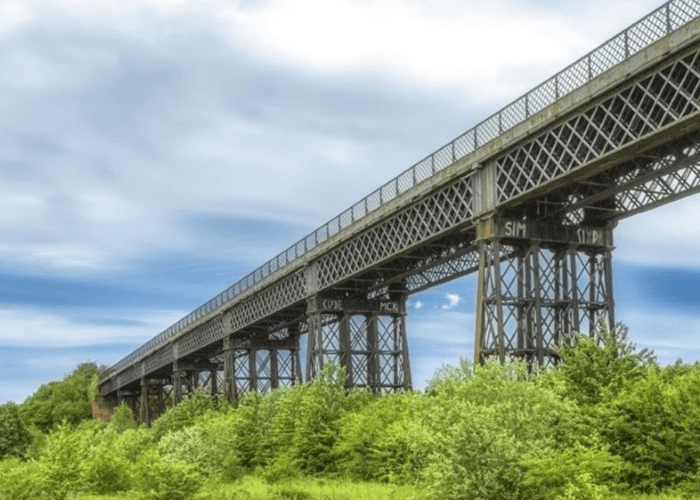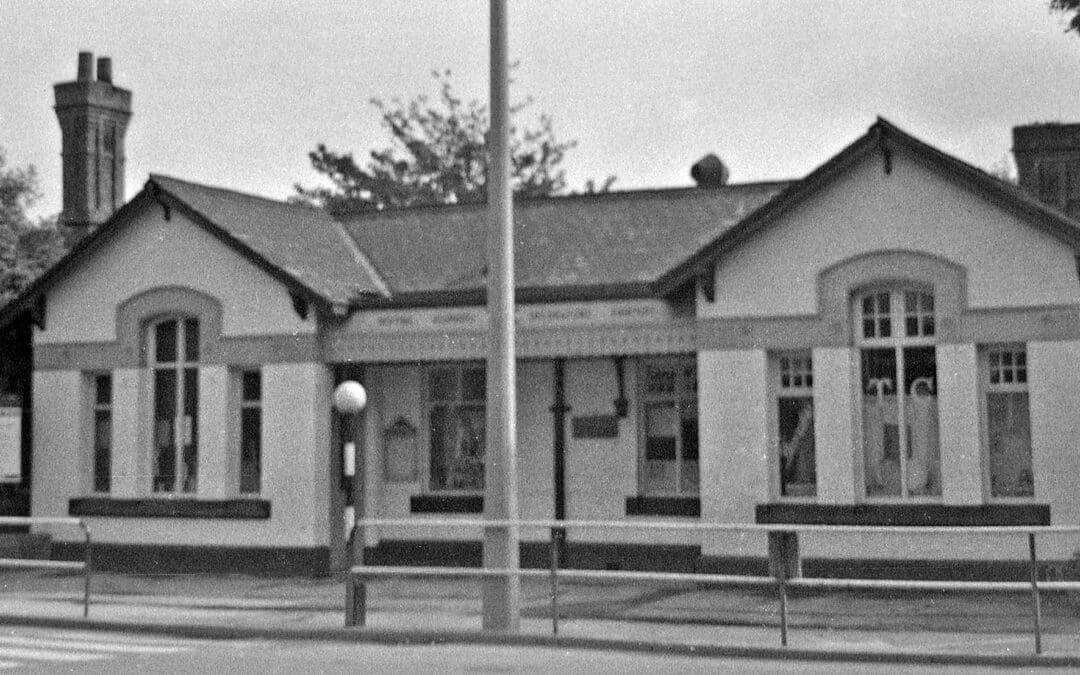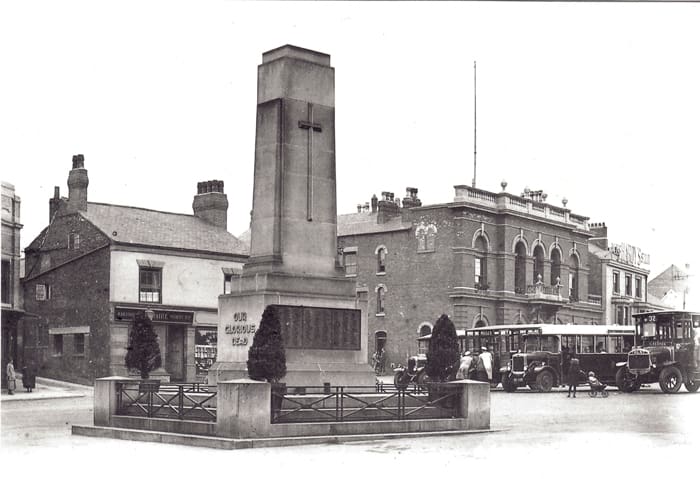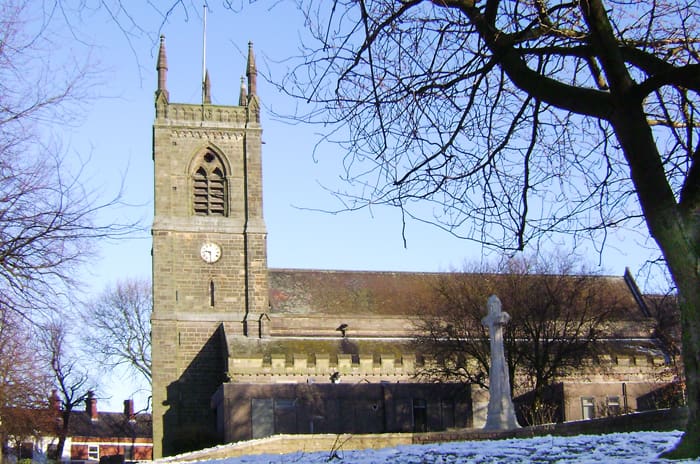Ilkeston: Bennerley Viaduct Grade 2: SK 470437
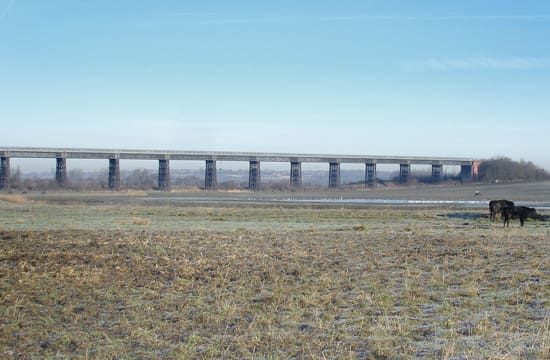
Impressive wrought iron lattice work viaduct circa 1879. Almost 500 yards (460 metres) long, it carried the former double track GNR Derby-Nottingham railway (‘the Friargate Line’) over the Erewash Valley. Built by Richard Johnson, it closed in 1968 but was renovated and opened as a footpath and cycle path in the early 2020’s. Now nationally known as only one of two surviving wrought iron viaducts, it has featured on several television programmes during the renovation and disabled access and a visitor centre and cafe are being built.

Hallam Fields: The Institute
The social club for the nearby ironworks, designed by Harry Tatham Sudbury. Opened in 1937 by the Mayor Ernest Adams, at that time a Stanton employee. Typically art deco in style, with a number of original features still surviving, the building style was influenced by the design of an ocean liner. Used as a primary location for the BBC TV series Playing The Field.
Ilkeston: 4 – 5 East Street
Late 18th/early 19th century brick house, with remodelled stucco front. Formerly Ilkeston Court House where petty sessions were held.
Ilkeston: Carnegie Free Library — Market Place, Grade 2
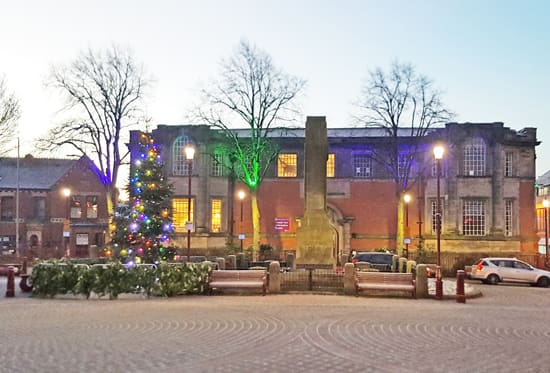
The library was built in 1904 to an Edwardian ‘Free Style’ (Baroque) design by Hunter and Woodhouse of Belper. It is orange brick and ashlar with sandstone dressings and has a centrally projecting round-arched doorway. Above the entrance a stone panel is inscribed in relief – CARNEGIE FREE LIBRARY – and between the first floor windows there are fine carved relief Art Nouveau panels.
Ilkeston: Church Institute — Market Place
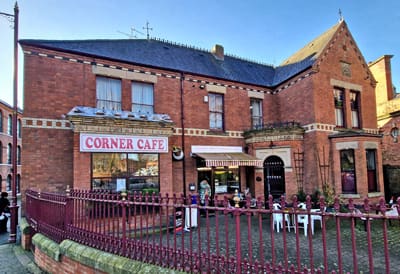
The Church institute was designed by Henry James Kilford who was the Surveyor to the Local Board and later to the Borough Council. It was opened in 1884 and was built in red brick with stone dressings to the front elevation. The words ‘Church Institute’ are highlighted in terracotta lettering on the side wall in Market Street. Inside the main entrance porch there is a memorial tablet to nine members who died in the First World War and three who died in the Second.
Ilkeston: Dalby House — High Street (Erewash Museum), Grade 2

Home to the Erewash Museum. Dalby House is a fascinating example of a building which over the centuries has been transformed by a series of extensions. According to an early map there was a house on this site in 1598. In the 1780s the three storey Georgian section was added and then in the 19th century there were further large extensions at the back, front and to the side.
Ilkeston: Galtee House — Heanor Road
Galtee House was built for Dr John Tobin. The exterior is an impressive example of decorative brick. Unfortunately the elaborate exterior woodwork has not all survived. It is said that successful bets on a famous racehorse, Galtee More, helped Dr Tobin pay for his new house.
Ilkeston: General Hospital — Heanor Road

Built in 1893 by Ilkeston Borough Council, this red brick building was opened by Lord Belper and closed as a hospital in the 1980’s.
It is at present a nursing home.
Ilkeston: Your Move Estate Agents – Bath Street

The building is unusual in that it has a splendid cast iron shop front which extends the full width of the building. A strong vertical emphasis is given to the upper storeys by the use of cream relief brickwork in the red mainly used. Also boasting an interior cast iron balcony, this interesting shop was once Godber’s decorators, Pillow’s Wireless Shop, (after an extensive renovation in the 1980’s) Sydney Brown Estate Agents and Halifax Bank before now being used as an Estate Agent again.
Ilkeston: Ilkeston School — King George Avenue
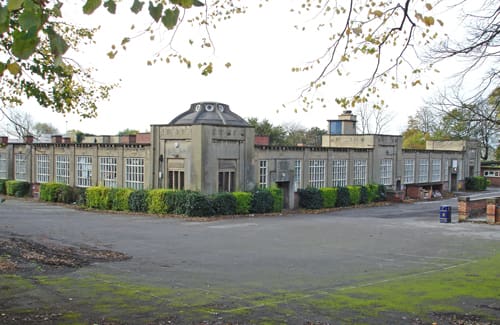
Although surrounded by a hotchpotch of modern buildings, the original school is distinctive. Designed by G H Widdows and built just before the Great War, it is brick mostly cement rendered, with sandstone dressings. Single storey, it is quadrangular enclosing a detached octagonal hall. The hall is surmounted by a large concrete dome, open internally to a lantern which has eight circular windows.
Ilkeston: The Market Place
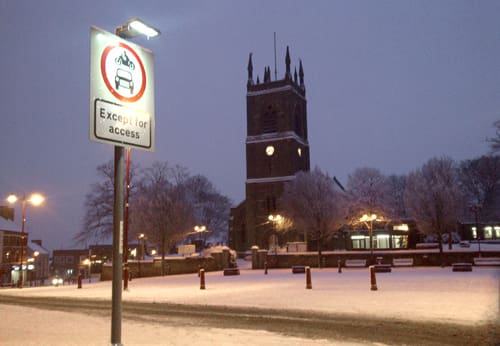
The original market place lay on the north side of the church and in the 18th century had a butter market and round house with a school room over — all since demolished. The market place was extended to the west of the church when a large school building was removed towards the end of the 19th century and extended further south in 1904 when the library replaced the Market Hall (a former school) and was set back 90 feet from the former building line.
The buildings on the north side of the market place appear to be late 19th/early 20th century re-facings of earlier buildings, whilst to the east is the church of St Mary the Virgin. The south side is enclosed by the Church Institute and the Carnegie Library. To the west is the former Ilkeston Co-operative Department Store which was extended in a range of styles thereby illustrating the change in shopping architecture over the 20th century. The Co-operative Society began trading in Bath Street during 1887, moving to 10-12 South Street a year later and building the first of its new premises there in 1904.
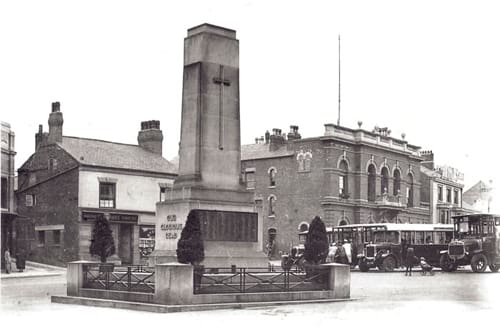
Further expansion took place in 1922, 1925 and 1938-40 closer to Wharncliffe Road and later additions were made along South Street in the 1960s and 1980s. The site was split up into retail and flats following closure of Ilkeston Co-op in the 2000’s.
The north west corner of the market place is enclosed by the Town Hall and the Sir John Warren public house — a former 19th century farm.
Two free standing structures which deserve a mention are the ‘Cenotaph’, the town’s civic War Memorial which was designed by local architect Harry Tatham Sudbury, and the combined drinking fountain, lamp standard and horse trough built in 1889 by Andrew Handyside and Company of Derby.
Ilkeston: Mines Rescue Station — Manners Road, SK 461424
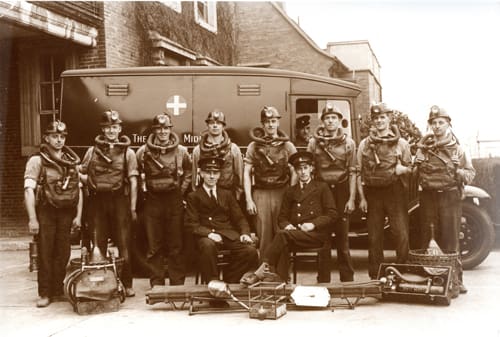
The Ilkeston Mines Rescue Station, opened in 1916, was situated in Manners Road near the corner that used to lead to Manners Colliery. It was one of three operated by the North Midlands Coal Owners’ Rescue Co Ltd. In the early days thirty men were based there providing cover for the sixty odd plus pits in the South Nottinghamshire area which Ilkeston formed a part. The main block was flanked on each side by two cottages for four married men and their families. On the ground floor of the main block were the instructor’s office, duty room, charging room, apparatus room, liquid air plant room, dressing and drying rooms, store, spray baths and toilets. Adjoining the main building were the observation and drill halls, hose tower, recruits training gallery, garage and recreation room. On the first floor was the committee room and quarters for four single men, including kitchen, scullery, bathroom and two double bedrooms, with a balcony fronting them.
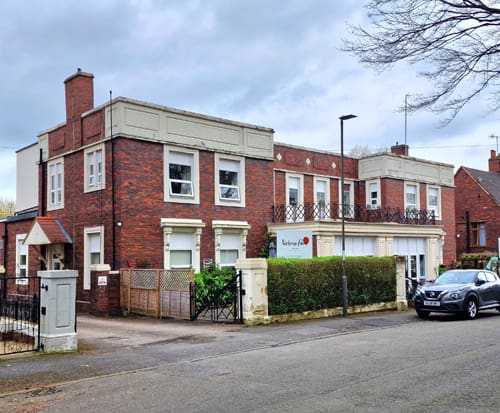
The Recreation Room contained a full-size billiard table for the use of the members of the resident corps. The basement provided the underground training gallery, gas testing chamber and boilers for the heating apparatus. The station closed in 1988 and has since been converted into Victoria Park Care Centre.
Ilkeston: The Old Police Station — Wharncliffe Road
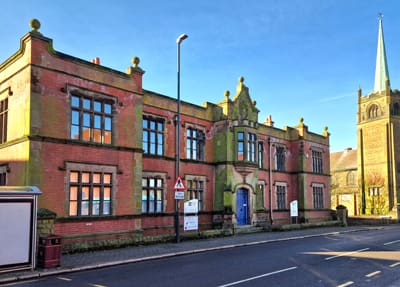
Built in 1906 and designed by Ilkeston Borough Engineer H J Kilford. The front has Jacobean design influences and is of pressed red brick with Rowsley Stone dressings. The central entrance block is entirely of stone with an Oriel window above which there is a stone carving of the former Borough coat-of-arms. The police station also incorporated cells, an exercise yard and houses for the Superintendent and Inspector.
Ilkeston: The Poplar Inn and The New Inn — Bath Street

These two earlier public houses were altered into fine arts and crafts style buildings by architect Harry Tatham Sudbury in about 1904. The Poplar was demolished in the early 2020’s.
Ilkeston: Former Ritz Cinema — South Street, Grade 2
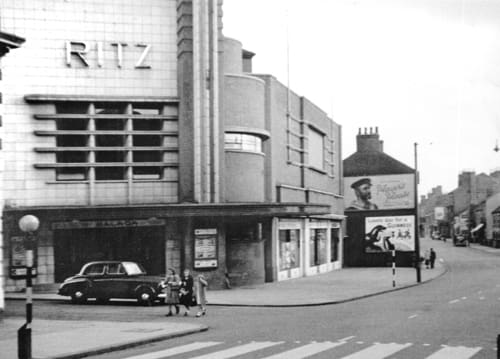
Built as the Ritz Cinema in a typical late 1930s style by Reginald Cooper of Nottingham in 1938. The exterior is a fine example of the Odeon style and is perhaps the finest surviving work of this important cinema architect. Much of the original interior remains including much art deco plaster work. Original seating survives on the circle and the offices and projection suite are original. Currently empty awaiting a new use.
Ilkeston: Rutland Chambers — Lord Haddon Road
This building was erected in 1899 was the local estate office for the Duke of Rutland. The upper floor was later occupied by Harry Tatham Sudbury, the local architect, who eventually bought the whole premises in 1920 for £1000.
Ilkeston: Rutland Hotel and Spa Baths
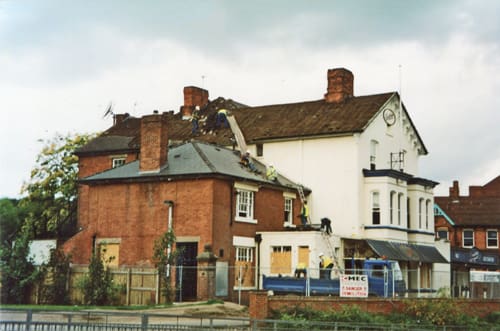
The Rutland Hotel, now demolished, was built around 1820 and was a stop for the Sheffield to Nottingham stagecoach known as the speculator. When the railway arrived in the 1840s, the hotel expanded and publicans such as Thomas hives provided additional accommodation and entertainment for visitors to the adjacent spa baths. The spa baths were built for Thomas Potter around 1830. As a result Town Street was renamed Bath Street. People were able to bathe or drink the waters which were reputed to have remarkable curative properties.
Behind the hotel were the Vauxhall Gardens dating from before 1850 and named after the famous 18th century pleasure gardens. They offered ‘music and spectacle’ in the shape of Quadrille bands, hot-air balloon ascents and firework displays.
Many years later the Rutland Hotel hosted “Crockers” and “Kristies” night clubs, a fond memory for those of a certain age.
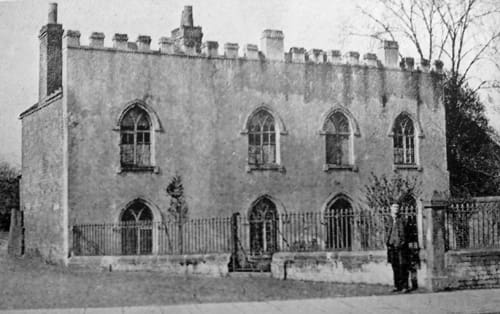
Ilkeston: Scala Cinema — Pimlico, Grade 2
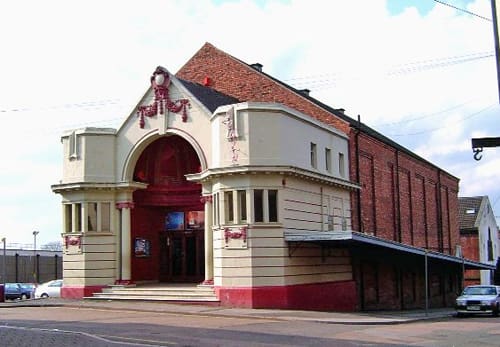
Ilkeston’s first purpose-built cinema by James Parsons and Sons of Bulwell (1913), believed to be the second oldest remaining purpose-built cinema in the country. The style incorporates features of Edwardian, classical and art nouveau designs.
Ilkeston: Toll Bar House — White Lion Square

This building, for many years occupied by the East Midlands Electricity Board and then by Erewash Borough Council, was erected in 1930 for the Derbyshire and Nottinghamshire Electric Power Company. Designed by Ilkeston architect, Harry Tatham Sudbury, with two storeys in a stripped classical style and incorporating art deco motifs, the building had a third storey added in 1937. The original entrance with revolving doors survives.
Ilkeston: The Town Hall — Market Place, Grade 2

A red brick Italianate style building of 1867-8 by R C Sutton of Nottingham. The front elevation has distinctive sandstone dressings with yellow and blue dressings to the ground floor window arches. At the first floor in front of the centre window is a bold stone balcony on carved brackets with open-work balustrade. There are 20th century extensions of little note to the rear on the site of the former open-air swimming baths.

Ilkeston: Victoria Park — Bristol Road
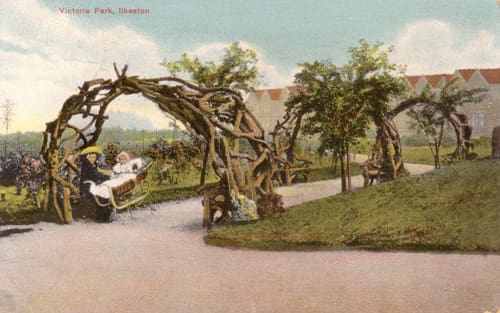
Eight acres of ground presented to the town by the Duke of Rutland to celebrate Queen Victoria’s Diamond Jubilee, the official opening taking place 20th August 1902 when the Duke and Mayor of Ilkeston both planted oak trees. It was laid with trees, shrubs and flower beds for walking, sitting and gentle recreation and a condition imposed by the Duke prohibits its use for adult cricket or football matches. It is a popular venue for band concerts during the summer.
Little Hallam: The Gables Private property: Grade 2
Early 18th century brick with decorative courses and two storey porch.
Little Hallam: Little Hallam Hall Private property: Grade 2
16th century timber faced house with a recessed brick porch and 18th century brick wing. Good interiors with 16th and 17th century panelling and early Georgian features.
It is Ilkeston’s oldest existing domestic building, it was the home of the family of John Flamstead, the first Astronomer Royal.
Morley: Sacheverall Almshouses Grade 2
Erected by Jacinth Sacheverall in 1656, the building consists of six dwellings all under one roof, each containing two rooms providing accommodation for three poor aged folk from Smalley and three from Morley. In the late 19th century, there was also a two shilling per week allowance for their sustenance.
Morley: Tithe Barn Grade 2
Probably early 17th century, originally associated with the manor house or hall. Part of the upper floor was designed as a dovecote with brick nesting houses and has a four bay beam roof. The mullioned windows can be seen from the nearby footpath.
Stanley: Stanley Grange
Originally a grange farm belonging to Dale Abbey before the dissolution, the Grange became a school for Roman Catholic young gentlemen in 1625 under the patronage of the Powtrells of West Hallam. It was a local loyalist centre during the English Civil War, when it suffered a raid by Parliamentary forces who forced the school to close after discovering a secret passage and hiding place there. Parts of the 17th century structures survive in the present 18th and 19th century farm buildings.
Stanley: Thatched Cottage Grade 2
A cruck cottage, one of only two thatched cottages in the borough. Mid 18th and 20th century exterior fabric. Internal structure dated to 15th and 16th centuries.
Stanton-by-Dale
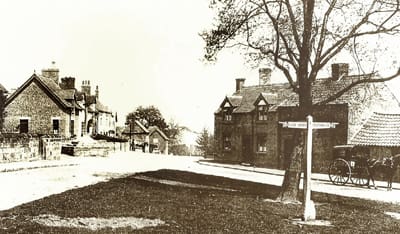
Designated a conservation area in 1978, the village has a well preserved character stemming from its origins as an estate village. In addition to the buildings, some of which are mentioned elsewhere, there are many smaller objects of interest. The stone village cross has a weather-worn shaft and a fleur-de-lis profiled head with the date 1632 on it. The large block base may well cover the original steps.
Nearby, the village pump, made at Coalbrookdale Ironworks, was erected by the women villagers to celebrate the reign of Queen Victoria. A little further down the road is the only surviving example of a tyring platform (but no wheelwright’s hearth) in Erewash. There is also an early cast iron boot scraper on the wall of 29 Main Street and further east on Quarry Hill are the remains of a stone pinfold.
Stanton-by-Dale: Stanton Ironworks
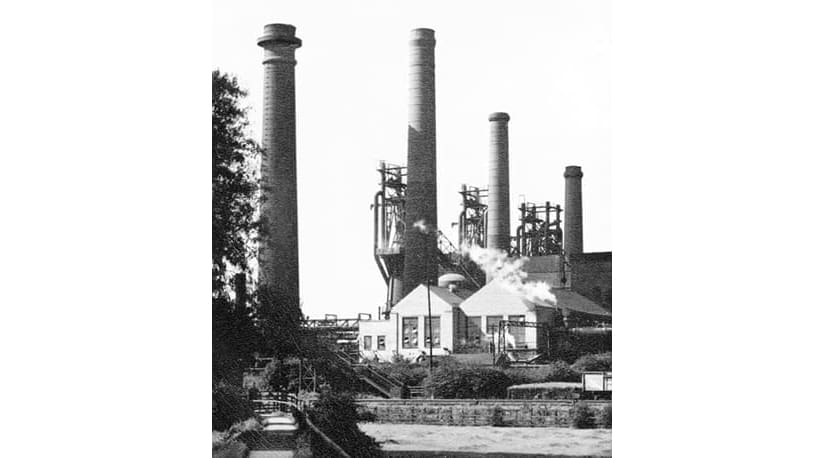
Founded by Benjamin Smith and Son. Three early open-top blast furnaces produced the first iron. Owned by the Crompton family from 1852 until Nationalisation in 1948. Tank parts and bombs for WW2 were among the many products including cast iron pipes, concrete pipes and street furniture. See also A Brief History of Stanton Ironworks.
Stanton-by-Dale: Birthplace of the Short brothers
The three famous aeronautical engineers spent some of their formative years at 3 Lows Lane, Stanton-by-Dale, one of a pair of substantial semidetached houses located at the rear of the Stanton works complex near the main offices. The names of the two elder brothers appear on the 1881 census but on the death of their father in 1891 the family, including a third younger brother moved to Ilkeston.
Stanton by Dale: Middlemore Alms Houses Grade 2
Terrace of seven but now converted to five. The four to the left of the picture — nearest the church — were built in 1711 with additional ones in 1735, 1829 and 1904. As each section is dated, they provide a fascinating guide to local brick development.
Stanton by Dale: Stanton Hall Grade 2
Mainly a 19th century building of red brick and stone, is known to have been the home in 1846 of Benjamin Smith ‘The Iron Master’ who produced pig iron from locally occurring ores. The house is reputed to have been the first in the county to have electricity installed throughout. Used for many years as a nursing home and now renovated.
West Hallam: Cinder House, Grade 2

This experimental house, composed of cinders made from burning large pieces of local clay, was built in 1833 at the time of the birth of the squire’s son Francis Newdigate. It featured on local photographs and was a local tourist attraction.
West Hallam: The War Memorial Grade 2
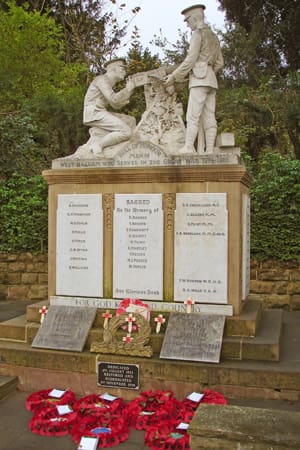
Dedicated on 12 August 1921, the memorial is in the form of a tall altar or chest tomb executed in Darley Dale grit-stone surmounted by a handsome sculpture, carved from a single block of Sicilian marble, of two soldiers with a machine gun on a tripod base. The memorial contains the names of those who fell and served in the Great War (1914-1918) and those killed in the Second World War (1939-1945). The memorial was designed by Messrs Beresford and Sons of Belper.

